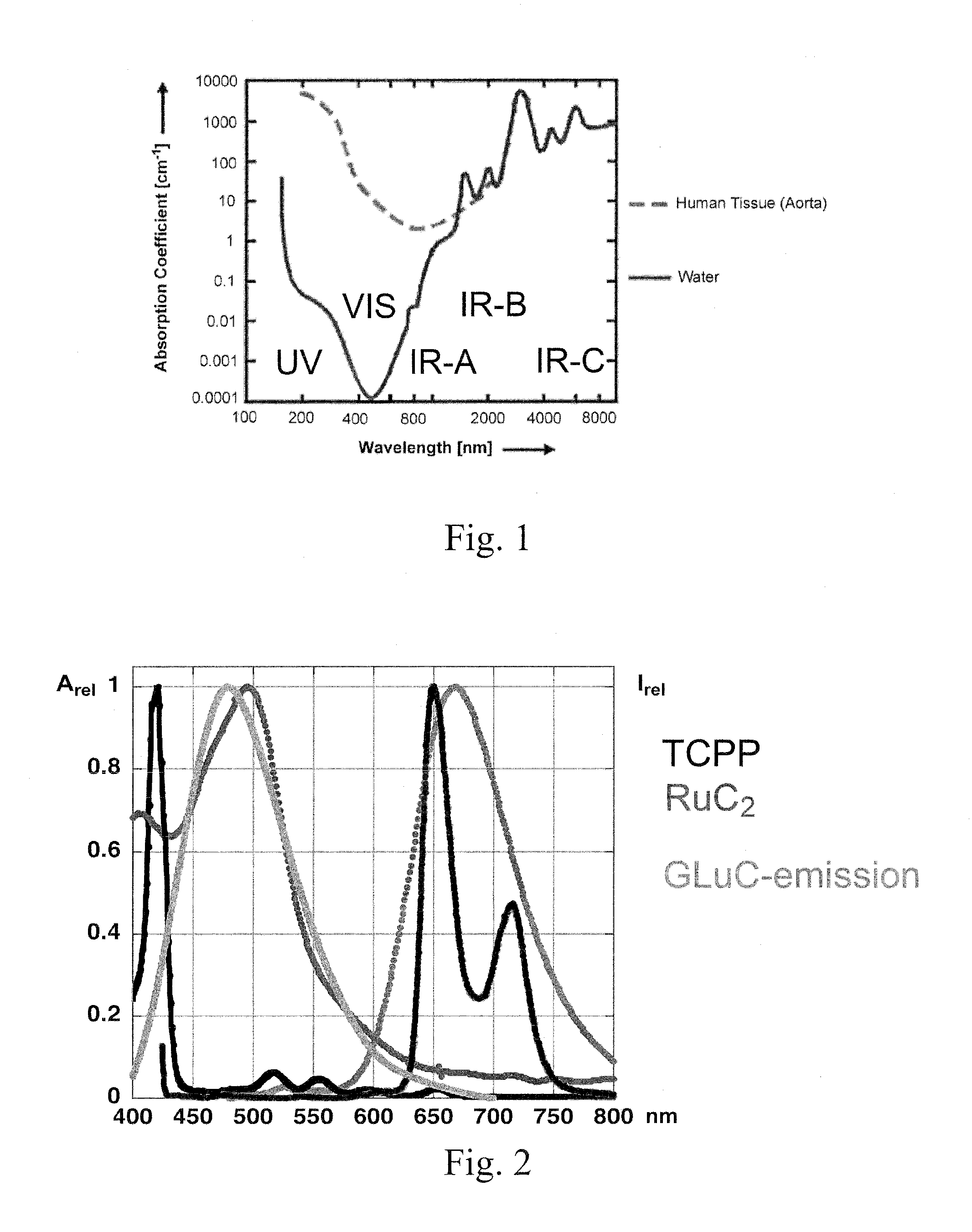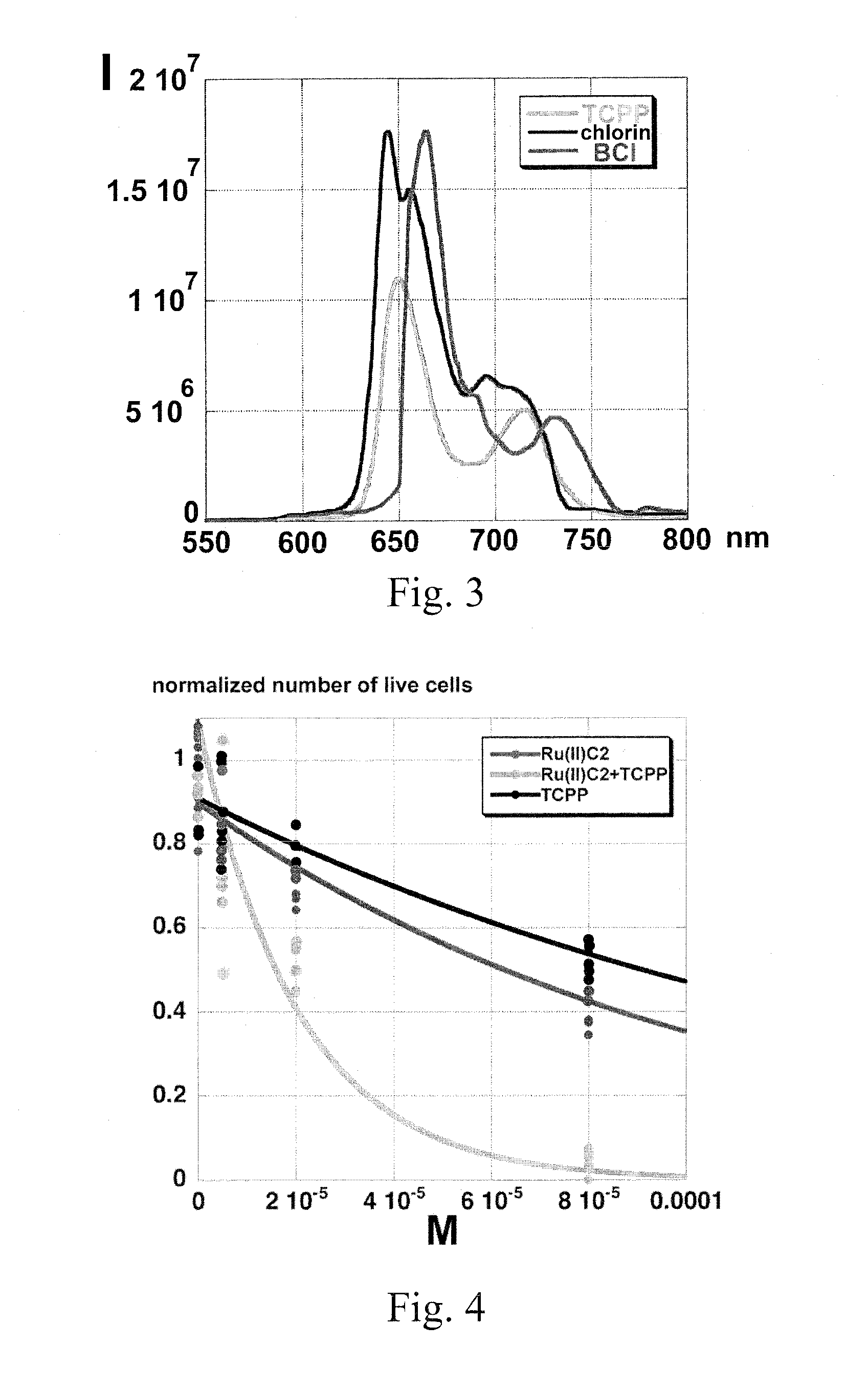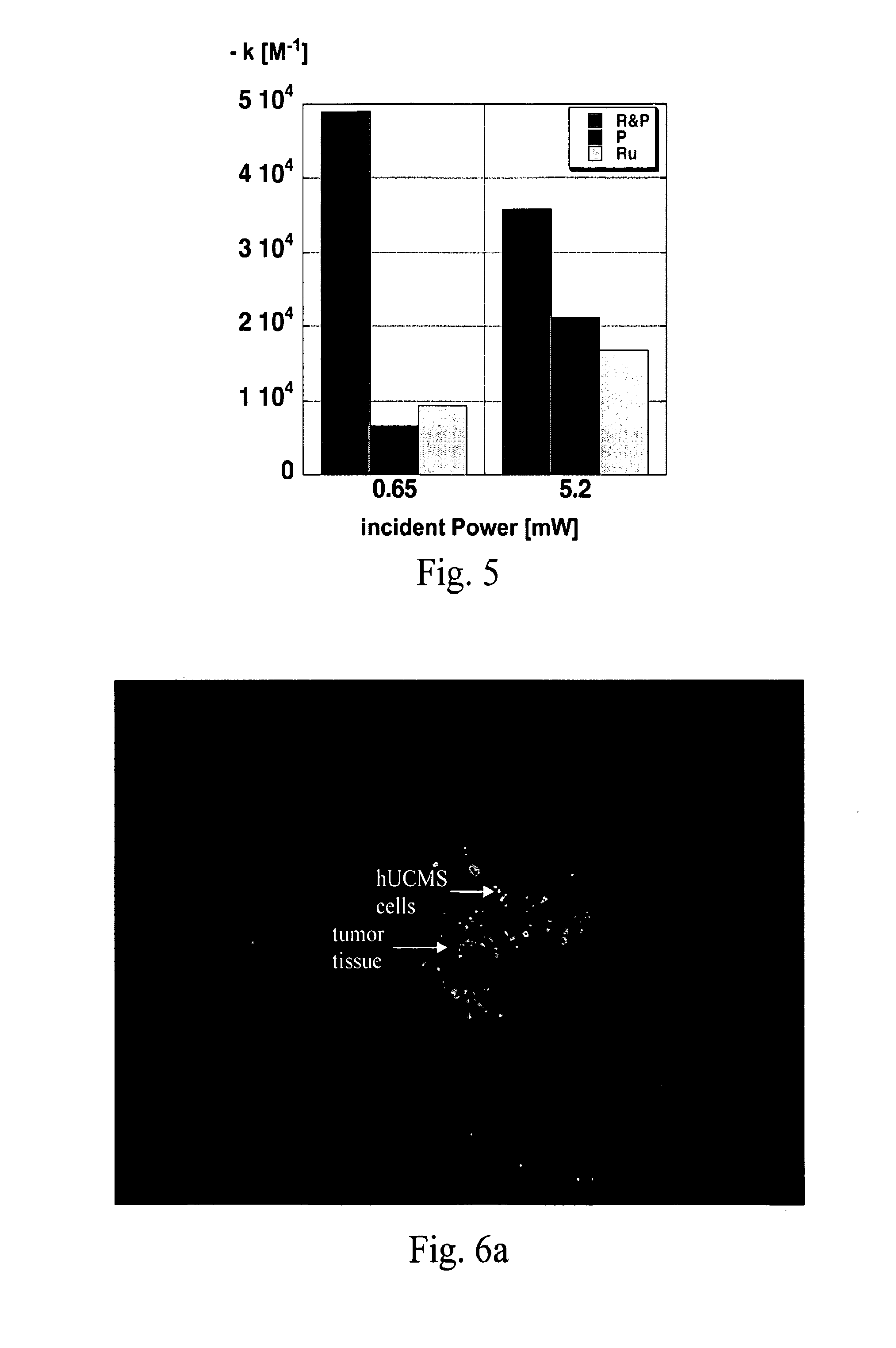Renilla/gaussia transfected cells as a light source for in-situ photodynamic therapy of cancer
a cancer and in-situ technology, applied in the field of deep tissue tumor imaging and photodynamic therapy, can solve the problems of affecting the immune response of the subject, affecting the treatment effect, and affecting the survival rate of the subject, so as to stimulate the subject's own immune response
- Summary
- Abstract
- Description
- Claims
- Application Information
AI Technical Summary
Benefits of technology
Problems solved by technology
Method used
Image
Examples
example 1
Initial Investigations
[0065]Using conventional transfection techniques according to the manufacturer's instructions, we have transfected C17.2. neural stem cells with a mammalian expression plasmid containing RLuc8 (Renilla luciferase pcDNA-RLuc8 plasmid, obtained from Dr. Loening; Stanford University, Stanford, Calif. 94305). The RLuc8 variant is approximately 4× brighter than native RLuc and about 200× more stable than RLuc in murine serum at 37° C. We hypothesized that the emitted light can be absorbed by RuC2 and then (partially) transferred to TCPP, TCPC, and TCPBC, or directly absorbed by the porphyrin, chlorin, or bactcriochlorin.
[0066]As shown in FIG. 2, the emission spectrum of Renilla luciferase and the 3MLCT-absorption band of RuC2 match perfectly. All measurements were taken at pH=6.8 in phosphate buffer using 4.0 mL quartz cuvettes (Helma) using a spectrofluorometer (Fluoromax 2) with dual monochromators and a diode array UV / Vis absorption spectrometer (HP 8453).
[0067]I...
example 2
Feasibility Study Using LED's
[0068]LED-irradiation experiments employing RL5-B12120 Superbright LED's, (Qmax=470 nm, light output 0.0114±0.0008 W) and a light-attenuation system consisting of a series of parallel optical filters was performed. After trypsinization, B16F10 mouse melanoma cells were counted using a hemacytometer and the trypan blue exclusion method, and plated in tissue culture plates (TPP brand, Midwest Scientific). Four hours post-plating, RuC2, TCPP, or a 1:1 mixture of RuC2 and TCPP was added to the plates, with the 1:1 mixture containing each agent at half their respective concentrations to permit comparisons at the same molar concentrations of PDT-agents. The cells were then stored in the dark for 24 hours. Next, the cells were irradiated with high or low intensity of LED light for 45 min. Twenty-four hours post-radiation, MTT cell proliferation reagent (thiazolyl blue) was added to the cells, which were then incubated four hours. Next, SDS-solubilization buffer...
example 3
In Vitro Study Using the Blue Luminescence from Gaussia Luciferase
[0071]A co-culture system was used to study the photodynamic effect of Gaussia luciferase-expressing neural stem cells (NSCs) or rat umbilical cord matrix stem cells (rUCMSCs) on B16F10 melanoma model cells. In previous work, stem cells have been used as stealth vehicles in a more classical cell-based gene therapy approach using, cytokine-transfected hUCMSCs, which significantly attenuated experimental lung metastasis of breast cancer cells without evidence of any damage in other normal tissues. As shown in FIG. 6a, dye-loaded IFN-expressing hUCMS cells were detected in small metastatic breast tumor tissue (see arrows), but not in the surrounding normal lung tissue. The image was recorded using a Nikon Diaphot inverted microscope on a TMD airtable equipped with Hoffman illumination, epifluorescence, and Leica and Eppendorf microinjection system. Similarly, previous work has established that stem cells preferentially a...
PUM
| Property | Measurement | Unit |
|---|---|---|
| light penetration depth | aaaaa | aaaaa |
| light penetration depth | aaaaa | aaaaa |
| light penetration depth | aaaaa | aaaaa |
Abstract
Description
Claims
Application Information
 Login to View More
Login to View More - R&D
- Intellectual Property
- Life Sciences
- Materials
- Tech Scout
- Unparalleled Data Quality
- Higher Quality Content
- 60% Fewer Hallucinations
Browse by: Latest US Patents, China's latest patents, Technical Efficacy Thesaurus, Application Domain, Technology Topic, Popular Technical Reports.
© 2025 PatSnap. All rights reserved.Legal|Privacy policy|Modern Slavery Act Transparency Statement|Sitemap|About US| Contact US: help@patsnap.com



